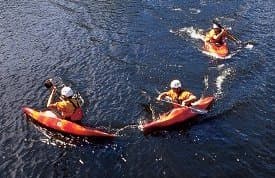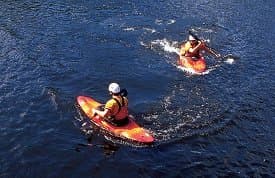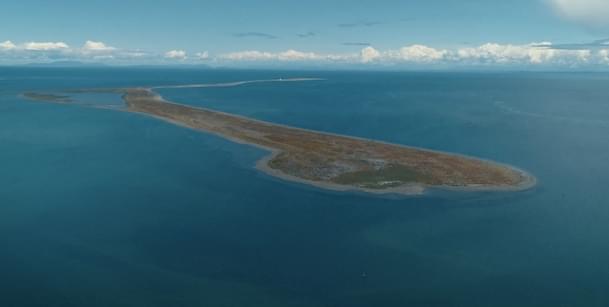An Introduction to Spin Momentum
Aside from being much shorter in length, the biggest difference between whitewater and sea kayaks is the shape of the hull. While sea kayaks are designed for forward speed and tracking, whitewater kayaks are designed to be as manoeuvrable as possible. This is accomplished with their shorter length, flat hulls, and an aggressive amount of rocker. While these combine to make the boats incredibly manoeuvrable (and fun!), these features can also leave you spinning in circles without the right technique.
A whitewater boat with forward speed left to coast on its own will skid out to one side and quickly lose its momentum because it does not have a centre line or keel in the water to keep it on track. It follows that whenever you give a boat forward or backward speed, you are also giving it potential 'spin momentum'. This is true of any boat left to coast, but the difference with whitewater kayaks is that their spin momentum will take over immediately because that is what they are designed to do! Of course, turning or spinning your boat also establishes momentum in one direction. Once established, spin momentum will continue turning the boat until there is no energy left or until something is actively done to change it.
Skidding vs. Carving
Now that you understand the concept of spin momentum, it's important that we look at the different ways it will turn your kayak. Modern whitewater kayaks are designed to turn very effectively in two different ways. Their wide, flat hulls allow them to skid, while the sharp edges allow them to carve. Both of these features come in really handy in different situations. Just as with downhill skiing or snowboarding, the key to carving is getting on edge and preventing your tail end from sliding out. Most paddlers have a tougher time carving than spinning out because it requires balancing on edge.

When your kayak in on edge, it will carve a turn.

When your kayak is kept flat, it skids to a stop.
Ken Whiting was the 1997/98 World Whitewater Freestyle Champion. He has produced an award-winning series of instructional kayaking books and DVDs, and leads kayaking trips to Chile. Look for his new book 'The Ultimate Guide to Whitewater Kayaking', and video 'The Ultimate Guide to Sea Kayaking'. Check out www.helipress.com.
Related Articles
What are the lighting requirements for paddle craft being operated at night or in periods of reduced…
By changing how you edge and balance your boat you can increase your stability and adaptability. Using…
Spring is here and the air is warm. But just because the day is beautiful doesn't mean the water…
Dungeness Spit from above, with the New Dungeness Lighthouse in the distance Dungeness…



